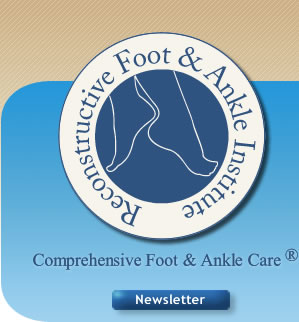Corns & Calluses
Corns and Calluses are your body’s response to friction or pressure against the skin. If your foot rubs inside your shoe, the affected area of skin thickens. If a bone is not in the normal position, skin caught between bone and shoe or bone and ground builds up. In either case, the outer layer of skin thickens to protect the foot form unusual pressure. In many cases, corns and calluses look bad but are not harmful. However, more severe corns and calluses may become infected, destroy healthy tissue, or affect foot movement. With your doctor’s help, corns and calluses can be controlled.
Corns can range from a slight thickening of skin to a painful hard bump. They often form on top of buckled toe joints (hammer toes). If your toes curl under, corns may grow on the tips of the toes or in between toes. You may also get a corn on the end of a toe if it rubs against your shoe.
Calluses may spread across the ball of your foot. This type of callus is usually due to a problem with a metatarsal (the long bone at the base of a toe, near the ball of the foot). A pinch callus may grow along the outer edge of the heel or the big toe. Some calluses press up into the foot instead of spreading on the outside creating a central core of tissue.
Treatment consists of reducing friction on the skin. Our office has special pads that can protect the skin from this friction. Furthermore, we have prescription shoes and Orthotics that can be used to take away the corn or pain by decreasing pressure, cushion calluses or divert pressure away from the problem areas. Your doctor may also trim away some of the layers of skin that make up the corn or callus. Finally, a special cream can take them away and we may recommend that for your problem.
Certain types of corns can grow in instead of out and these may need laser removal. Laser’s can remove the Corn without pain and with rapid recovery. Other times, a chemical called Cantharone is used to remove the Corn. This chemical can be applied in the office with little or no pain as well. After Cantharone is applied, it can cause pain for 2 – 3 days. It may need to be applied 2 or 3 times to get rid of the corn. If you have pain, taking Tylenol or Motrin may help as can ice packs or elevation.
If a bone or joint is out of place, certain parts of your foot may be under too much pressure. This can cause severe corns and calluses. In such cases, surgery is often the best way to correct the problem. Surgery is usually an outpatient procedure where your doctor will shave or cut away excess bone. Sometimes ligaments or tendons are cut to reduce tension on a bone or joint. You can usually walk immediately after surgery and recover in the comfort of your own home. You can also have anesthesia that puts you asleep or anesthesia that you don’t have to go to sleep for and still not have pain during surgery. These procedures require little or no time off work. Surgery is always the last option and most people get better without surgery.
